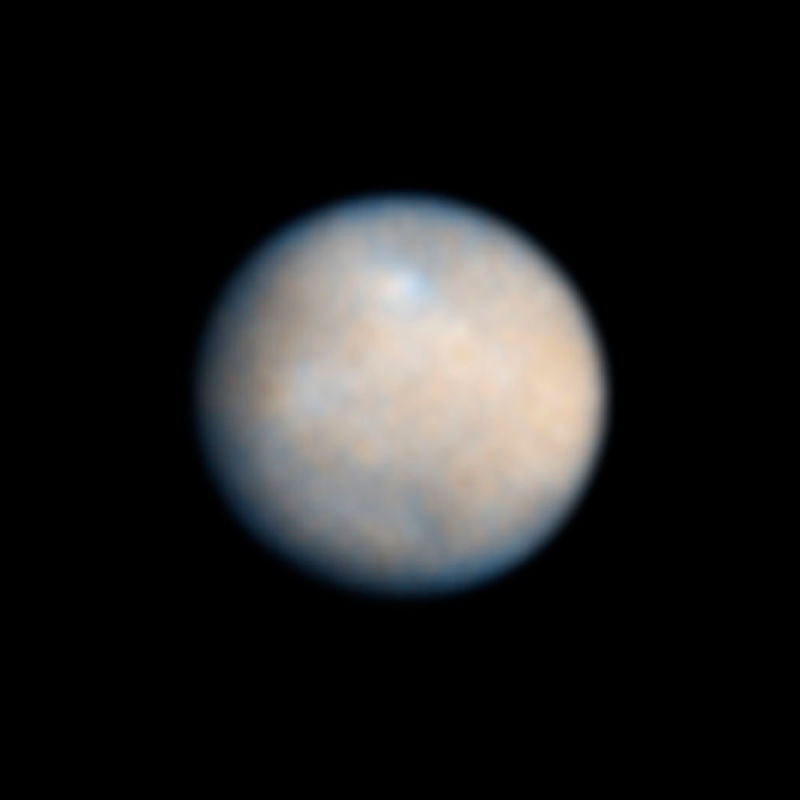While New England is experiencing a 2nd little ice age, the Dawn spacecraft gets closer to Ceres. It is now close enough that its main camera can see Ceres better than Hubble can.
This is about 30% better than Hubble can see and it's close enough that we can begin to make out some details. The Great White Spot* in the northern hemisphere can be seen much more sharply. The best bet is that it's the crater formed from a recent impact. The composition of Ceres is probably like that of a comet - a dirty snowball - with a layer of dust acting as insulation, keeping the ice frozen. This would explain the crater's contrast with the rest of the surface. The crescent shaped shady area in the southern hemisphere that was noticeable on previous photographs, including the best Hubble shot, seems to be a line of craters. It was possibly formed from a glancing blow or from a line of closely flying objects.
For reference, this is the previous best image from Dawn. Below is the best Hubble image.

*"Great" being a relative term. Cere's diameter is just under 600 miles, or about the straight line distance between NYC and Columbia, South Carolina, which is about as small as round planets get. The "great" white spot is probably just a bit smaller than the area inside the DC beltway, or around 15 miles in diameter. Earth, on the other hand, is almost 8,000 miles in diameter. That's a little more than 13 times as wide as Ceres and more than 530 times as big as the "great" white spot. Meanwhile, the Great Red Spot on Jupiter is about three times as wide as Earth, or about 24,000 miles. That makes it about 40 times wider than Ceres or probably around 1,600 times wider than the "great" white spot.